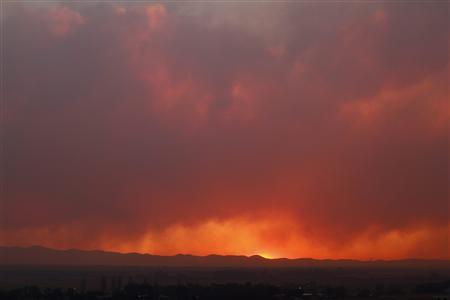
The way the TWS campaign piece here is written implies that the “loopholes” are in relation to the 2001 Rule.
The draft Colorado Rule contains several major flaws that, unless corrected, mean Colorado’s forests would receive less protection than other states.
The proposed Colorado rule:
Allows 100 oil and gas leases to be developed in some of Colorado’s best backcountry areas.
Does not clearly specify where logging would be allowed for the purpose of reducing fire risk to communities.
Allows for road building (euphemistically called “linear construction zones”) for water conveyance structures, electrical power lines, telecommunication lines, and oil and gas pipelines.
Leaves out over 2 million acres of exceptional lands from receiving enhanced “upper tier” protections. Further, loopholes put “upper tier” roadless areas at risk from oil and gas development, pipelines, and transmission lines.This proposed Colorado rule would undermine the protections these forests enjoy under the 2001 national roadless forest rule. Our wild Colorado forests deserve better than this.
Allows for road building (euphemistically called “linear construction zones”) for water conveyance structures, electrical power lines, telecommunication lines, and oil and gas pipelines.
As we know, based on case law from the Bull Mountain case, the 2001 Rule does allow linear construction zones.
That is the key point that TWS must have missed. So therefore ANY restrictions that the Colorado Rule puts in place make the Colorado Rule more restrictive than the 2001; and therefore give Colorado’s forests greater protection that the rest of the country (of course, whether the rest of the country is under the 2001 Rule as we await the appeal in the 10th Circuit is unclear).
What the Colorado Rule does is define them and put in several kinds of restrictions on them. For powerlines and telecommunication lines, going around the roadless area must be show to be more environmentally damaging. They are not allowed for oil and gas pipelines that go from outside a roadless area to another location outside a roadless area.
Here’s the definition from the proposed Colorado rule:
Linear Construction Zone: A temporary linear area of surface disturbance over 50 inches wide that is used for motorized transport by vehicles or construction equipment to install a linear facility. It is not used as a motor vehicle route and is not engineered to road specifications.
And on the powerlines and telecommunication lines:
Authorize electrical power lines or telecommunication lines within Colorado Roadless Areas only if there is no opportunity for the project to be implemented outside of a Colorado Roadless Area without causing substantially greater environmental damage;
Leaves out over 2 million acres of exceptional lands from receiving enhanced “upper tier” protections. Further, loopholes put “upper tier” roadless areas at risk from oil and gas development, pipelines, and transmission lines.
Well, I don’t know how exceptional the 2 million acres are; we could argue about that. I do know that many folks are concerned that the upper tier as in the proposed rule does not allow for treatments for wildlife habitat that involve tree-cutting, and for fuels treatment. It’s easy to say”upper tier is good” but to get agreement about what lands should go into it and what the prescription should be (other than those previously agreed to through forest plans) is not so clear.
To assert that “loopholes put “upper tier” roadless areas at risk from oil and gas development, pipelines, and transmission lines” seems to be a restatement of previous inaccuracies. Again, roads for new oil and gas leases are not allowed, same as 2001. The only question is the legality of allowing roading in the so-called gap leases (see #1 of this series) and that can be solved in court. If the roading is allowed in preexisting leases, it doesn’t matter if the area is in upper tier or not- what governs is that the lease is valid and preexisting.
As described above the Colorado Rule is actually more restrictive than the 2001 with regard to pipelines and powerlines.
Reasonable people can disagree about many things in the proposed rule. But it doesn’t help public discourse to publish untrue and/or misleading assertions. It distracts members of the public from debating the real issues and reduces the quality of public comment and discourse, in my opinion.
I ran across this this morning in my readings, from the Buddhists:
“Right speech (explained in positive terms) means speaking in ways that are trustworthy, harmonious, comforting and worth taking to heart. When [we] make a practice of these positive forms of right speech, [our] words become a gift to others.” (Thanissaro Bhikkhu)







